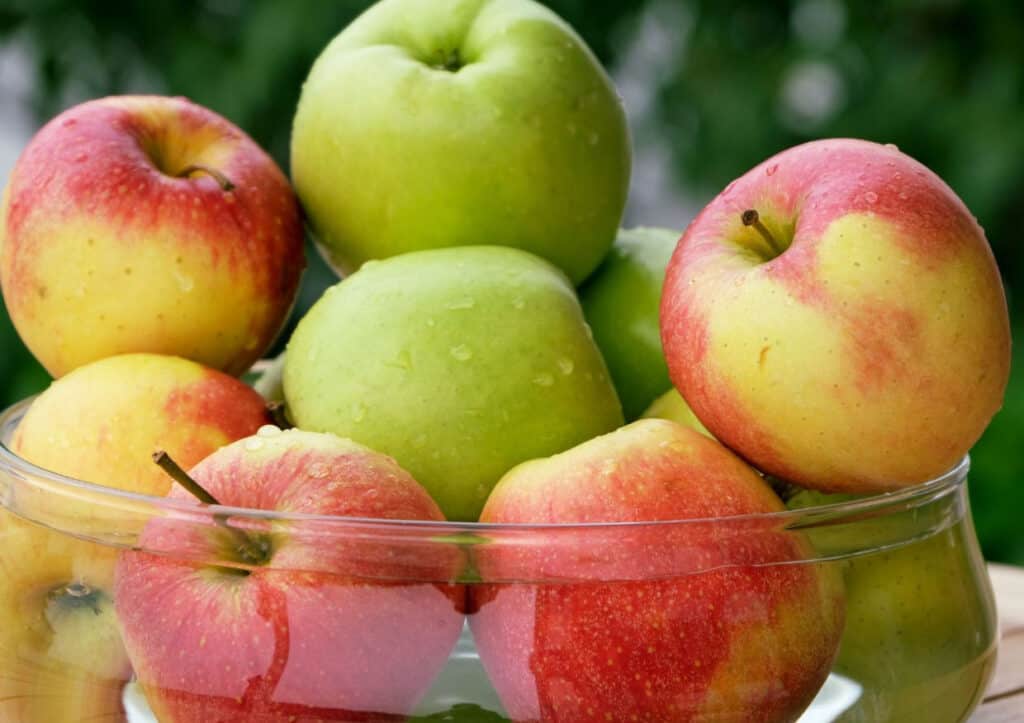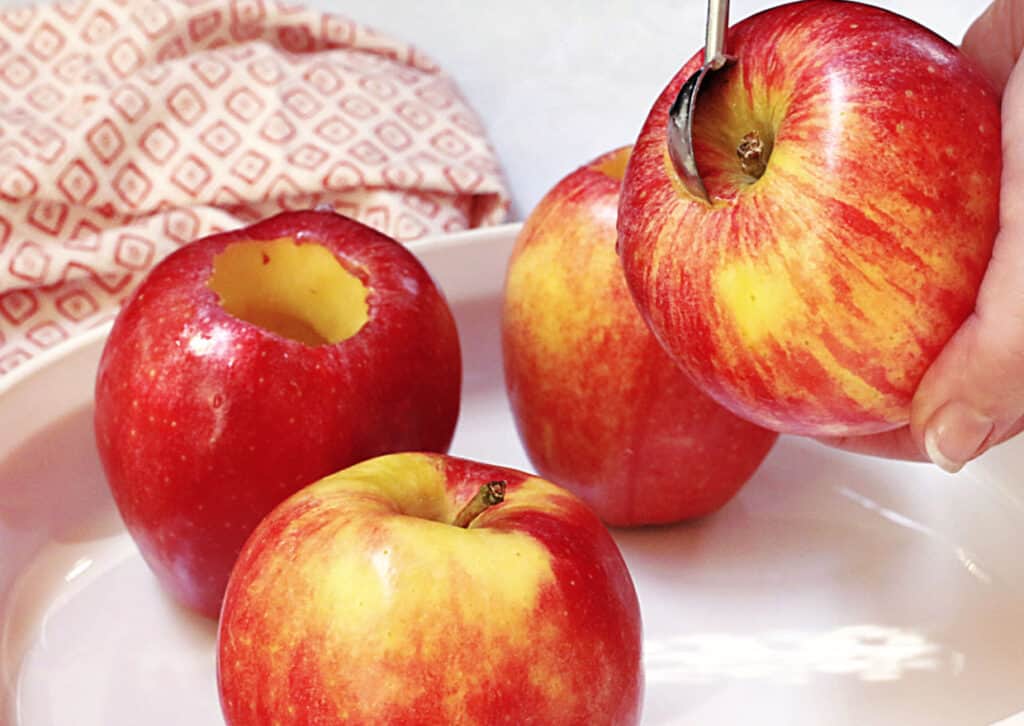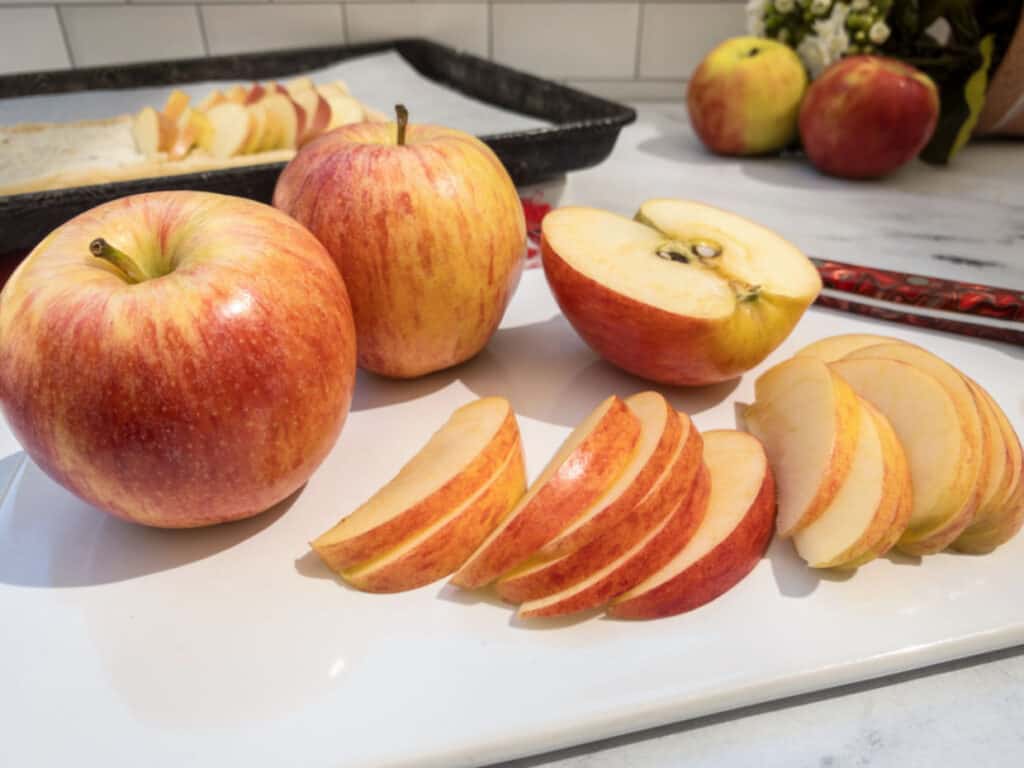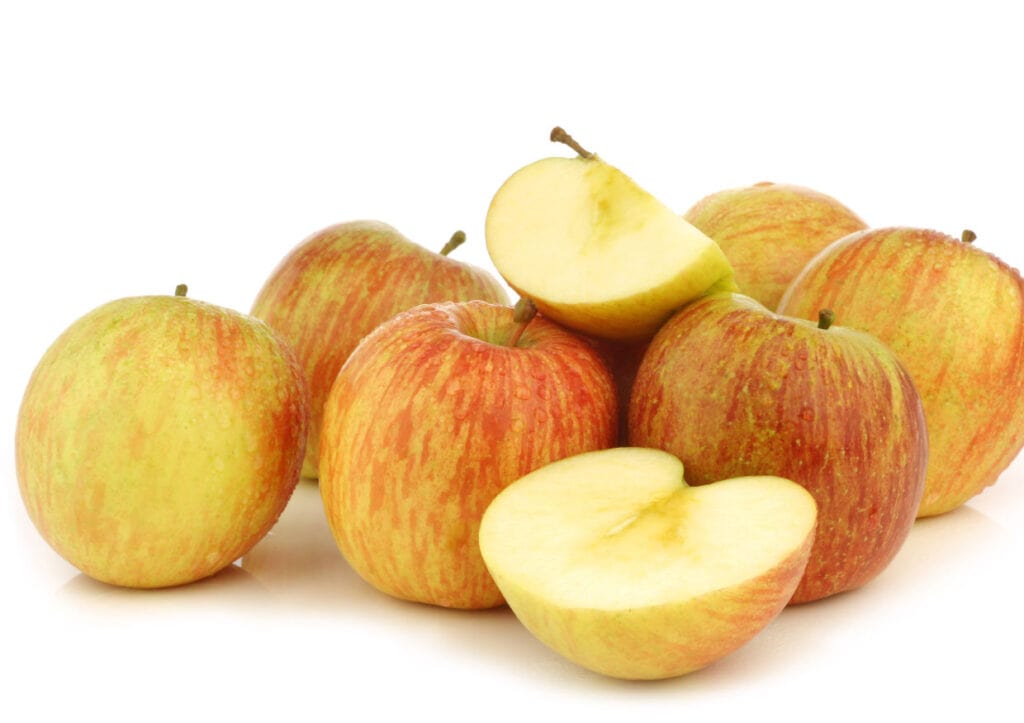Apples are the perfect fruit for all kinds of delicious baked goods, from pies and cakes to tarts and turnovers. But not all apples are created equal when it comes to baking. That’s why picking the best apple for your recipe matters.
From firm and juicy varieties like Granny Smith and Honeycrisp to sweet and fragrant options like Gala and Fuji, we will explore what distinguishes each apple. Find out which apples retain their shape when baked and which transform into a soft and tender filling. Discover which varieties are best for pies, which are ideal for delicious baked apples and which are perfect for incorporating into cakes and breads.

What makes an apple suitable for baking?
When it comes to baking, not all apples are created equal. Some apples are better suited for baking due to their flavor, texture and ability to hold up during the baking process.
The ideal baking apple needs to be both sweet and tart, with a firm texture that doesn’t turn mushy when baked at high temperatures.
The acidity of the apple is important for balancing flavors in baked goods. Tart apples add contrast and depth to the sweetness of the dessert, while sweeter apples can enhance the natural sweetness of your baked product.
What is the difference between baking apples and regular apples?
When you compare regular eating apples with baking apples, the big difference is how much sugar they have, which affects their taste when you bake them. Baking apples are more on the tart side than sweet. These tart apples also have less water, keeping their shape and staying firmer when you bake them. So, if you’re thinking about which apples to use for baking, go for the tart ones. The best apples for baking are crispy, firm, a bit sweet and tart and can handle the oven’s heat without turning mushy.
- Tart apples don’t necessarily mean sour, but they have a balanced acidity that works well in baking.
- The lower water content is a key factor in preventing mushiness during baking.
It’s worth noting the many regional varieties of apples available in your area can also be used in your baking endeavors, so definitely give them a try.
While all apples can be eaten, not all apples are equal when it comes to baking. Some are better than others, so experiment to find the best apples for making your apple bread or cobbler.
FDL’S 75 Best Bites

Our cookbook with 75 tasty recipes will be your go-to kitchen companion for easy dinners with ad-free recipes right at your fingertips. Crafted by experienced chefs and recipe developers, this collection offers a treasure trove of tried-and-true dishes that make mealtime a breeze.
Get the Recipe: FDL’S 75 Best Bites
What types of baking apples should you use?
Here are some of the most readily available varieties of apples that are perfect for baking. Each has its own unique flavor and texture.
Granny Smith tart and firm
Granny Smith apples are known for their distinct tartness and firm texture. These familiar green apples hold their shape exceptionally well when baked, making them perfect for pies and tarts, and they are delicious in these buttery scones.

Honeycrisp: Sweet and crisp
Honeycrisp apples are known for their delicious juiciness, crispness and sweet and tart flavors. Given their natural sweetness, they are ideal for pies, tarts, cakes and muffins. These apples retain their shape well when baked, but the texture becomes softer because of their juiciness, making them perfect for dishes like baked apples, crisps and cobblers where a softer textured apple is desired.

Gala: Firm and sweet
Gala apples are crisp and known for their sweet and fragrant taste. Galas are best suited for recipes that require a sweeter apple flavor and moisture, such as bread, muffins, cakes, turnovers and crumbles. Their natural sweetness adds a rich apple flavor to your baked goods, and they bake up softer, which makes them a popular choice among bakers.

Fuji: Firm, crisp, sweet
Fuji apples are sweet and aromatic, with a dense and crisp texture. The natural sweetness of Fuji apples makes them perfect for pies, where their flavor shines through. Their firm texture holds up well during baking, ensuring your pie filling doesn’t turn mushy but bakes up soft enough to cut into. Fuji apples also work well when you need a grated apple like in these apple cupcakes, but try them in crumbles and crisps, too.

When it comes to pie, I like to use tart Granny Smith apples because they hold their shape even after a long baking time. This is a plus when cutting and serving slices of pie. I also prefer the contrast in flavor between the tart apples and whatever sweet ingredients are in the filling.
— Rebecca Blackwell, Of Batter and Dough
What are the secrets to baking with apples?
When baking with apples, there are a few tips and tricks you can follow to ensure the best results:
- Choose the right apple variety for your recipe. Consider the apple’s flavor profile, texture and acidity to find the perfect match. Do you want the apples to stay somewhat firm or become softer when baked?
- It’s not always necessary to peel and core the apples before using them in your recipes, but it does ensure a smoother texture in your baked goods.
- To ensure even baking, cut the apples into uniform slices or cubes.
- To keep your apples from browning when cut, sprinkle them with lemon juice.
- Depending on how sweet or tart your apples are, you can play around with the amount of sugar and spices in your recipe. Feel free to adjust these elements according to your taste preferences.
- A great tip when choosing apples is to mix different apple types to add a more complex apple flavor.
How to pick the best apple?
- Choose apples that are currently in their peak season. Apples that are out of season often are stored, which can impact their level of sweetness and juiciness.
- Select apples that are firm and free from any blemishes or insect-related damage.
- Choose the freshest, fully ripe apples with a fresh apple scent.
If you want to preserve apples for an extended period, consider canning or freezing them. Canned apples can be used in pies and sauces, while frozen apples can be used in baked goods.
Honeycrisp is always the favorite apple to use in recipes, but sometimes I like to use a different combo of apples in recipes to balance the flavor and honestly, because that is what we have on hand. Gala, Fuji and Granny Smith are our favorites!”
— Gena, Ginger Casa
Apples may not be considered an exotic fruit, but they have managed to sweet-talk their way into being one of the most universally beloved fruits. When picking the best apples for baking, consider the texture and flavor they bring to the party. You want these apples to be the real stars of the show. So, take a moment to choose the perfect apple variety that’ll give your treats that delicious texture and mouthwatering taste. Happy baking.
Jere Cassidy is the writer and recipe developer behind the blog One Hot Oven. A passion for all things food-related led her to culinary school to expand on her baking skills and now to share easy recipes for all home cooks and bakers of all skill levels. When not in the kitchen, Jere’ likes to travel far and wide to find delicious food.